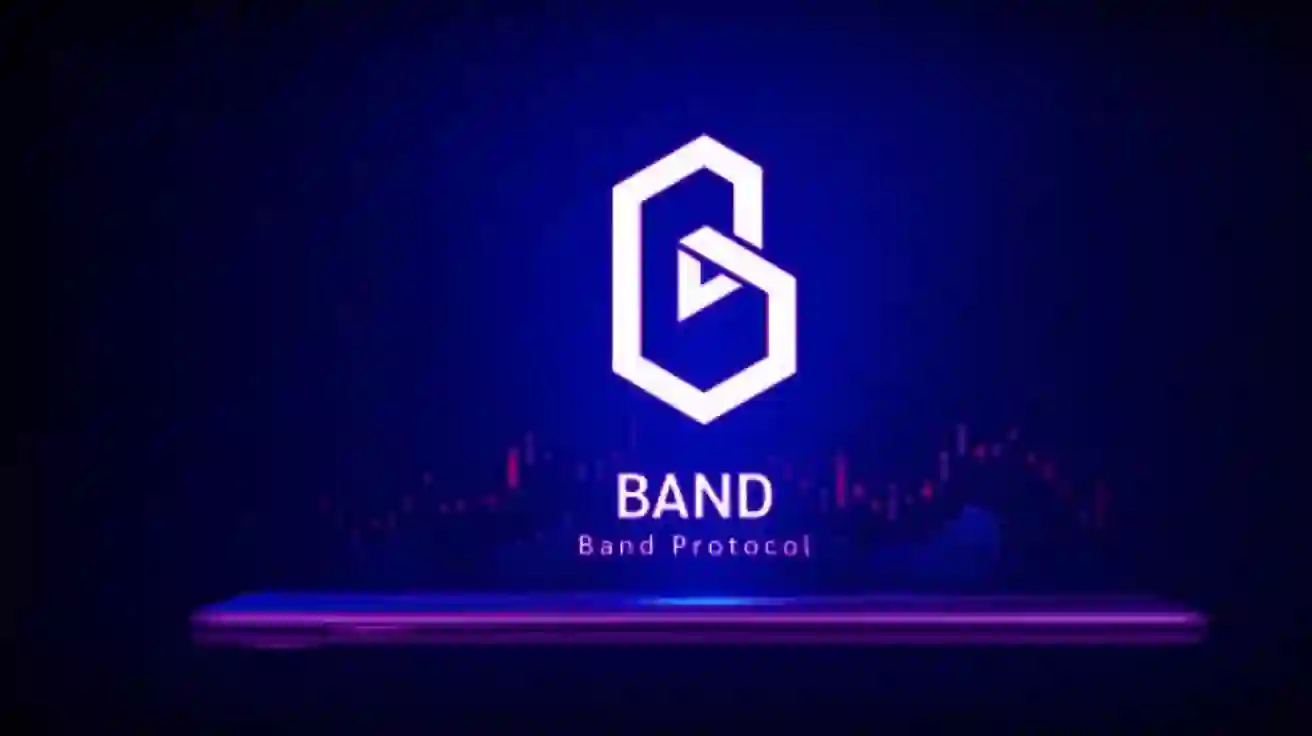Introduction to Band Protocol
The ever-evolving blockchain ecosystem has brought forth numerous innovations, with decentralized applications (dApps) at the forefront of this technological shift. One critical component that enables these dApps to function effectively is oracles—services that provide real-world data to blockchain-based smart contracts. Band Protocol is one such decentralized oracle solution, bridging the gap between blockchains and external data sources. As the demand for reliable data integration grows, Band Protocol has positioned itself as a formidable competitor to Chainlink, offering multi-chain functionality and increased efficiency.
This guide explores Band Protocol’s architecture, its advantages, use cases, and how users can acquire its native token, BAND.
What is Band Protocol?
Band Protocol is a decentralized cross-chain oracle designed to facilitate data transfer between off-chain sources and on-chain applications. Initially launched on Ethereum in October 2019, Band Protocol later migrated to the Cosmos blockchain in June 2020 to enhance scalability and interoperability. Unlike traditional oracles that are often restricted to a single blockchain, Band Protocol supports multiple networks, making it a versatile tool for developers building dApps beyond the Ethereum ecosystem.
How Does Band Protocol Work?
Band Protocol serves as a bridge between smart contracts and external data sources, ensuring that dApps can access accurate and timely information. The protocol operates through its own blockchain, BandChain, which utilizes a decentralized network of validators to confirm data accuracy and security. These validators are incentivized through the BAND token, which is used for governance, staking, and transaction fees.
Key Features of Band Protocol:
- Cross-Chain Compatibility: Unlike some oracles that are limited to Ethereum, Band Protocol integrates with multiple blockchains, enhancing its usability.
- Decentralized Validation: The protocol employs a network of validators to ensure the authenticity of data fetched from off-chain sources.
- Efficient and Scalable Infrastructure: The move to Cosmos has improved transaction efficiency, reducing congestion and increasing throughput.
- Diverse Use Cases: Beyond financial data, Band Protocol supports other industries, including sports, weather forecasting, gaming, and supply chain management.
1/ 🌟 Decentralized trading and synthetic asset DApps @Mirror_Protocol and @InjectiveLabs have integrated Band Protocol oracles for real-time stock and equity feeds. TVL secured by $MIR and $BAND oracles stands at $88.6M in CDPs and 108M liquidity. 🚀
— Band Protocol (@BandProtocol) January 13, 2021
The Role of BAND Token
BAND is the native utility token of Band Protocol and plays a crucial role in its ecosystem. Here’s how it functions:
- Staking: Validators and delegators stake BAND tokens to secure the network and receive rewards in return.
- Governance: Token holders can participate in governance decisions, influencing protocol upgrades and parameter changes.
- Transaction Fees: Users pay fees in BAND for data requests processed by the network.
Use Cases of Band Protocol
Band Protocol has found applications in various domains beyond traditional finance. Some of its primary use cases include:
1. Decentralized Finance (DeFi)
DeFi applications require accurate price feeds for assets, lending protocols, and automated trading strategies. Band Protocol integrates with major platforms to provide secure and real-time data.
2. Gaming and eSports
Gaming dApps often require live data, such as match scores or in-game statistics. Band Protocol enables developers to incorporate real-time data into their platforms.
3. Supply Chain Management
Businesses leveraging blockchain for supply chain transparency can utilize Band Protocol to track shipments, verify product authenticity, and ensure compliance with industry standards.
4. Weather and Insurance
Smart contracts in insurance dApps require accurate weather data for policy claims. Band Protocol connects these platforms with reliable weather APIs.
Band Protocol (BAND) is launching at https://t.co/bCG11KMQ6s and in the iOS and Android apps within the next 15 minutes. You may need to update your app to properly buy, sell, convert, send, receive, or store BAND. We will update when BAND is fully live. https://t.co/wWiSTLsES7
— Coinbase 🛡️ (@coinbase) August 13, 2020
Band Protocol vs. Chainlink
Band Protocol’s closest competitor is Chainlink, the most widely used decentralized oracle network. While Chainlink dominates the market, Band Protocol offers key differentiators:
- Multi-Chain Support: Band Protocol natively supports multiple blockchains, while Chainlink primarily operates on Ethereum.
- Cost Efficiency: Band Protocol claims to have lower transaction costs compared to Chainlink’s oracle services.
- Faster Transactions: The Cosmos-based infrastructure allows Band Protocol to process requests more quickly than Ethereum-based oracles.
While Chainlink enjoys a significant market cap and early adoption advantage, Band Protocol continues to expand its network and partnerships to gain competitive ground.
Band Protocol’s Roadmap and Future Developments
Band Protocol has laid out ambitious plans for its future development. The roadmap includes:
- Enhancements to BandChain: Further optimizations to improve data request processing speed and efficiency.
- Self-Service Integration: Simplified onboarding for developers looking to integrate Band Protocol oracles into their projects.
- Institutional Collaborations: Partnering with major enterprises and institutional-grade data providers to expand its reach and utility.
- BandChain Phase 2: Enabling data providers to monetize their contributions through various fee structures.
How to Buy BAND Tokens
BAND is available on both centralized and decentralized exchanges, making it accessible to investors and users alike. Below are the steps to buy BAND tokens:
Step 1: Choose an Exchange
BAND is listed on several platforms, including:
- Centralized Exchanges (CEX): Binance, Coinbase, Kraken, Huobi
- Decentralized Exchanges (DEX): Uniswap, Kyber Network
Step 2: Create an Account
For centralized exchanges, users must register, complete identity verification (KYC), and set up two-factor authentication for security.
2/ 🌈 Our updates for February include:
– 1,700,000 Oracle Requests on BandChain
– Estimated $4.5B in value secured across partners
– Completing BandChain Upgrade to support IBC
– Eight Major Partnership Developments— Band Protocol (@BandProtocol) March 1, 2021
Step 3: Deposit Funds
Users can deposit fiat currency (USD, EUR) via bank transfers or credit/debit cards. Alternatively, they can transfer cryptocurrency (USDT, ETH, BTC) to trade for BAND.
Step 4: Purchase BAND
Navigate to the trading section, select the BAND pair (e.g., BAND/USD, BAND/ETH), and place an order. Options include:
- Market Order: Instant purchase at the current price.
- Limit Order: Buy at a specific price point.
Step 5: Secure Your BAND Tokens
Once purchased, store BAND tokens securely in a cryptocurrency wallet. Options include:
- Hot Wallets: Atomic Wallet, Trust Wallet, MetaMask
- Cold Wallets: Ledger, Trezor (for long-term storage)
The Future of Band Protocol
Band Protocol’s expansion into multiple blockchains, along with its cost-efficient oracle services, makes it a strong contender in the decentralized data space. As blockchain ecosystems grow and more dApps emerge, the demand for reliable oracles will increase.
Challenges remain, including competition from Chainlink and the need for greater adoption across various industries. However, with strategic partnerships, continuous innovation, and a strong community, Band Protocol is well-positioned to play a crucial role in the future of decentralized applications.
Conclusion
Band Protocol represents a significant step forward in blockchain technology by offering reliable, decentralized oracle services. With its cross-chain compatibility, efficient infrastructure, and growing adoption, Band Protocol is poised to become a key player in the decentralized finance and broader blockchain ecosystem. Whether you’re an investor, developer, or enthusiast, understanding and engaging with Band Protocol could provide valuable opportunities in the evolving world of blockchain technology.



